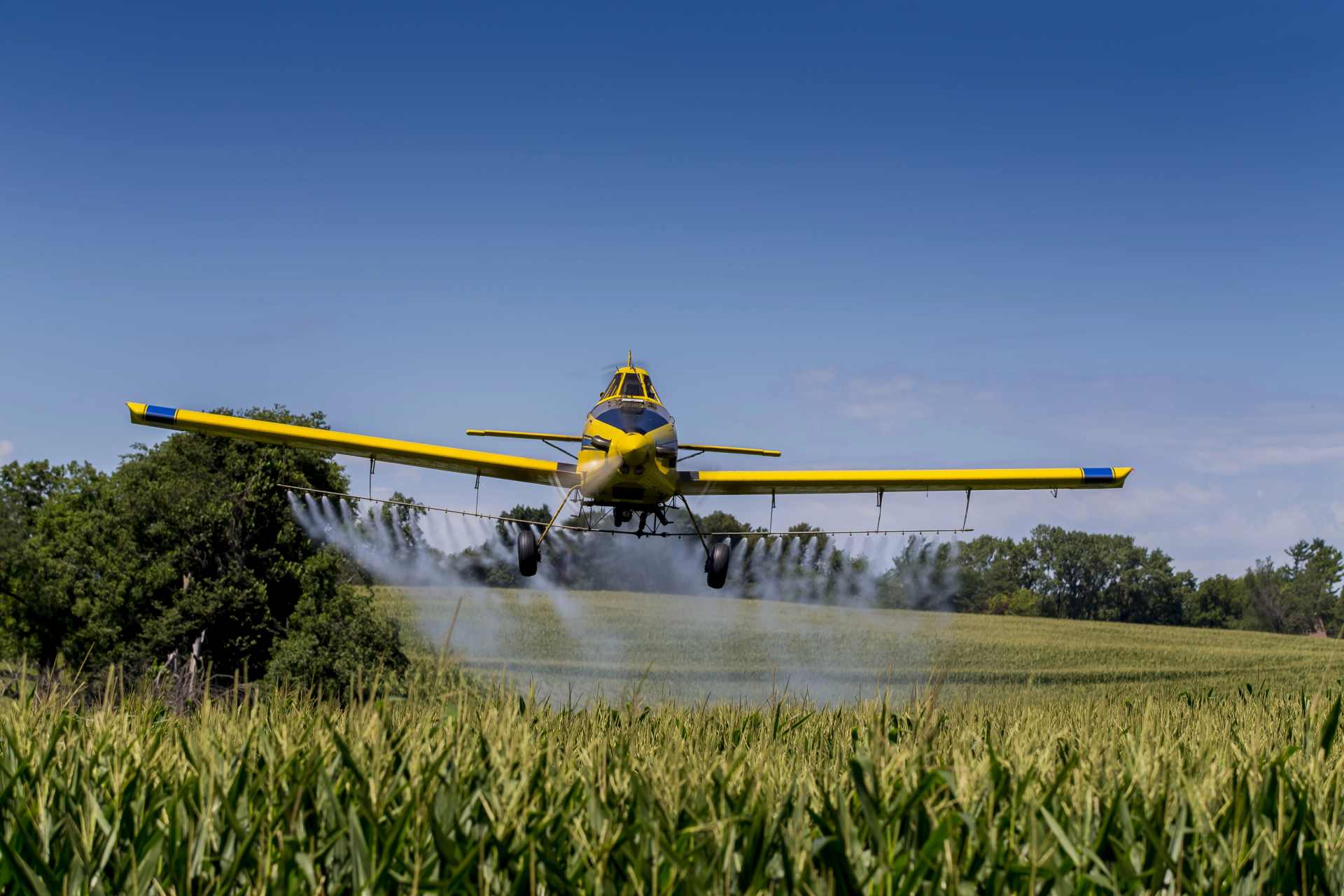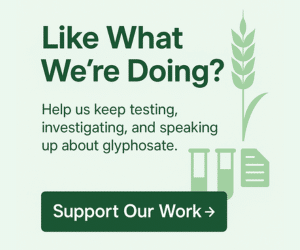If you’ve seen the headlines—“Bayer launches an alternative to glyphosate”—you’re not alone in wondering what’s going on.
With pressure mounting globally to phase out glyphosate-based herbicides like Roundup®, Bayer has unveiled a new product: Icafolin‑methyl.
So, is this a genuine shift away from glyphosate… or just a slick rebrand of chemical agriculture?
Let’s break it down.
What Is Icafolin?
Icafolin‑methyl (or just “Icafolin”) is a new herbicide molecule that Bayer claims will help farmers tackle herbicide-resistant weeds while supporting more sustainable practices like no‑till farming.
It’s being touted as the first new herbicide mode of action in over three decades—a big claim, especially when resistance to older herbicides is rapidly eroding their usefulness.
But here’s the catch: it’s not actually replacing glyphosate. It’s being positioned as a complement—another chemical in the cocktail.
How Does It Work?
Unlike glyphosate, which inhibits a plant’s ability to produce certain amino acids (via the EPSPS enzyme), Icafolin works by disrupting tubulin polymerization—essentially stopping cells from dividing and growing.
It targets β‑tubulin, a protein that forms the framework for plant cell division. That makes it lethal to weeds… but (reportedly) harmless to animals and humans, because the molecule doesn’t bind to animal tubulin in the same way.
In field trials, treated weeds stop growing—but remain upright, acting as a kind of “natural mulch” that protects the soil. Sounds helpful in theory—but it’s still a synthetic chemical at the end of the day.
Resistance Management: The Real Driver?
Glyphosate resistance is spreading fast. Many of the world’s worst weeds—like ryegrass and blackgrass—no longer respond to glyphosate alone. Bayer is marketing Icafolin as a resistance-buster: an additional weapon that works even on herbicide-resistant weeds.
In that sense, Icafolin is less about replacing glyphosate… and more about protecting glyphosate’s future.
This raises a fair question:
Is Bayer solving a problem… or prolonging it?
Environmental Fate: Is It Safer?
Here’s where it gets interesting. Early soil studies show that Icafolin breaks down quickly—sometimes in under an hour in aerobic soils. By day 35, half of the applied chemical has been converted to CO₂, and its intermediate metabolites appear to degrade within about a month.
That’s much faster than glyphosate, which can persist in soil and water far longer, depending on conditions.
But—and this is important—public toxicity data is still limited.
We don’t yet know:
- How it impacts aquatic life, bees, or birds
- What its chronic low-dose exposure effects might be
- Whether its metabolites are completely harmless over time
So while its degradation profile looks promising on paper, the environmental and health impacts deserve far more scrutiny before anyone celebrates it as a safe alternative.
When Will It Be Available?
Icafolin is currently under review in Brazil, the United States, Canada, and the EU, with a commercial launch expected in 2028—starting in Brazil. There’s no word yet on when (or if) it will be approved in New Zealand.
And even if it is… the broader question remains:
Do we want to keep swapping one synthetic herbicide for another?
What This Means for New Zealand
For Kiwi growers and gardeners who are looking to transition away from glyphosate, Icafolin doesn’t offer an immediate solution. It’s not organic. It’s not non-chemical. And it’s not yet available.
And let’s not forget—it’s being introduced by the same company that said glyphosate was safe for decades.
If Icafolin is meant to buy more time for the industrial model of agriculture, then it may slow real progress rather than speed it up. Especially when safer, proven alternatives to glyphosate already exist—from mechanical weed control to certified organic solutions that don’t require a chemical workaround.
So… Is It a Game Changer?
Maybe. But not for the reasons Bayer wants us to believe.
Icafolin’s unique mode of action is scientifically interesting. Its low-dose efficacy and rapid soil breakdown are encouraging signs. And it could offer short-term relief for growers grappling with herbicide resistance.
But as with glyphosate, the devil is in the long-term details—the ones that haven’t been made public yet.
At No More Glyphosate NZ, we’ll be keeping a close eye on this one. Because we’ve seen how “safe” products can turn into global public health controversies. We’ve learned the hard way that early promises don’t always match reality. And we believe real solutions are rooted in transparency, ecology, and innovation—not in replacing one chemical with another.
This article is part of a mini-series exploring what’s replacing glyphosate—and why it might not be the revolution we’re being sold.
- Part 1: You are here — Icafolin: The New Glyphosate Alternative or More of the Same?
- Part 2: The Desiccation Dilemma: Why Glyphosate’s Real Role Is Hard to Replace
- Part 3: What Makes Icafolin Different from Glyphosate?
- Part 4: What Happens After Glyphosate? A System Under Scrutiny
Further Reading:
Icafolin is being sold as a breakthrough—but who’s doing the selling, and what’s missing from the story? The resources below help cut through the marketing gloss and dig into the science, the strategy, and the stakes.
Bayer Submits Registration Applications for Novel Herbicide
CropLife, July 2025
Industry announcement detailing Bayer’s launch plan for Icafolin‑methyl, including target crops, mode of action, and market rollout timeline.
Icafolin: An Alternative to Glyphosate
EFA News, July 2025
European agri-food news coverage exploring Bayer’s positioning of Icafolin as a glyphosate alternative and its sustainability claims.
The Novel Herbicide Icafolin-Methyl Is a Plant-Specific Inhibitor of Tubulin Polymerization
ResearchGate, June 2024
Peer-reviewed study explaining how Icafolin selectively disrupts plant tubulin—without affecting mammalian cells—making it a unique herbicide mechanism.
Soil Degradation and Mineralization Study of Icafolin-Methyl
SSRN Preprint, March 2024
Preliminary environmental fate study showing rapid degradation of Icafolin in aerobic soils and minimal long-term residue risk.
Bayer Herbicide Icafolin-Methyl Poised to Transform Global Agriculture
ChemAnalyst, July 2025
Highlights Bayer’s sales expectations, target crops, and rationale for Icafolin’s introduction in light of resistance issues.
Pesticide Properties Database: Icafolin-Methyl
University of Hertfordshire
Public data page listing chemical properties, degradation rates, and regulatory identifiers for Icafolin-Methyl.
Bayer Advances Registration for Icafolin in Four Major Markets
Fruitnet, July 2025
Covers the same regulatory launch but adds details on Bayer’s digital discovery tools and projected rollout strategy.
This is just the beginning. As more data emerges—and more countries weigh approval—we’ll continue tracking Icafolin’s impact. Because every new “solution” deserves scrutiny, especially when it comes wrapped in promises of progress.
Image Source & Attribution
We’re grateful to the talented photographers and designers whose work enhances our content. The feature image on this page is by actionsports.




